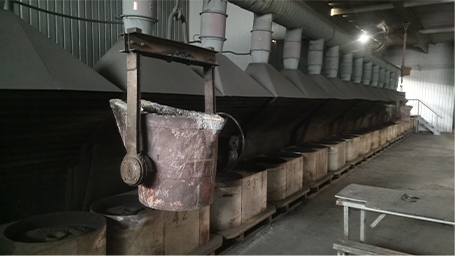ਅਗਃ . 17, 2024 04:34 Back to list
Illustration of Brake Drum Components and Their Functions in Vehicle Braking System
Understanding Brake Drum Parts A Comprehensive Overview
When it comes to vehicle safety, the braking system plays a crucial role, and one of the key components of this system is the brake drum. Brake drums are commonly found in older vehicles and certain types of trucks and trailers. Understanding the parts and function of brake drums is essential for vehicle maintenance and safety. Here, we will explore the various components of a brake drum, their roles, and how they contribute to effective braking.
Components of a Brake Drum
1. Brake Drum The brake drum itself is a cylindrical component made of cast iron or steel that houses the brake shoes. The inner surface of the drum is machined to provide a smooth surface for the brake shoes to press against when braking. The diameter and width of the drum can vary depending on the vehicle's requirements.
2. Brake Shoes These are curved pieces of metal that are lined with friction material. When the brake pedal is pressed, hydraulic pressure forces the brake shoes outward against the inner surface of the drum, creating the friction needed to slow down or stop the vehicle. Regular inspection and replacement of the brake shoes are crucial as worn shoes can lead to reduced braking efficiency.
3. Cylinder The wheel cylinder is a hydraulic component that converts the fluid pressure from the brake system into mechanical force. As fluid enters the cylinder, it pushes the pistons outward, forcing the brake shoes against the drum.
4. Pistons Inside the wheel cylinder, there are typically two pistons. When hydraulic pressure is applied, these pistons move outward to press the brake shoes against the drum. The effectiveness of the braking system relies on the proper functioning of these pistons.
brake drum parts diagram

5. Return Spring After the brake pedal is released, the return spring pulls the brake shoes back from the drum, preventing them from dragging and thus minimizing wear on both the shoes and the drum. The strength and placement of the return spring are vital for proper functionality.
6. Adjuster The adjuster is a mechanism that ensures the brake shoes maintain the correct distance from the drum as they wear down. This is crucial for maintaining optimal braking performance. Many modern systems have self-adjusting mechanisms that activate automatically as the shoes wear.
7. Backing Plate This is the component that holds all of the brake components in place and provides a mounting surface for the wheel cylinder and brake shoes. It also protects the internal parts from dirt and moisture, helping to prolong their lifespan.
Importance of Maintenance
Regular maintenance of the brake drum system is essential for safe vehicle operation. Factors such as heat, dust, and debris can affect the performance of the brake system over time. Drivers should be vigilant in monitoring brake responsiveness and listen for unusual sounds when braking, which could indicate worn brake shoes or other issues.
Routine inspections can help identify problems early. It is generally advisable to have your brake drum system checked by a professional mechanic regularly, especially if you notice any symptoms like a spongy brake pedal, unusual noises, or decreased braking efficiency.
In conclusion, understanding the components of the brake drum system enhances awareness of vehicle safety and maintenance needs. A well-maintained braking system is vital for ensuring the safety of both drivers and passengers on the road. Whether you're a car enthusiast or simply a vehicle owner, familiarity with brake drum parts and their functions can empower you to make informed decisions regarding your vehicle's maintenance and help keep you safe on the road.
-
Brake Drum Man - High-Quality Drum Brake Drums & Brake Shoes for Reliable Performance
NewsJun.24,2025
-
High-Quality Brake Drum Kamaz – Durable Drum Brake Drum & Brake Shoe Replacement
NewsJun.10,2025
-
High-Quality Brake Drum Liza for Drum Brake Systems - Superior Durability and Performance
NewsJun.10,2025
-
High-Quality Brake Drum Kamaz – Durable Drum Brake Drum & Brake Shoe Solutions
NewsJun.10,2025
-
Durable Kamaz Brake Drums High-Performance Truck Parts
NewsJun.09,2025
-
Premium Brake Drum Maz Kit with Shoes Enhanced Braking
NewsJun.09,2025
